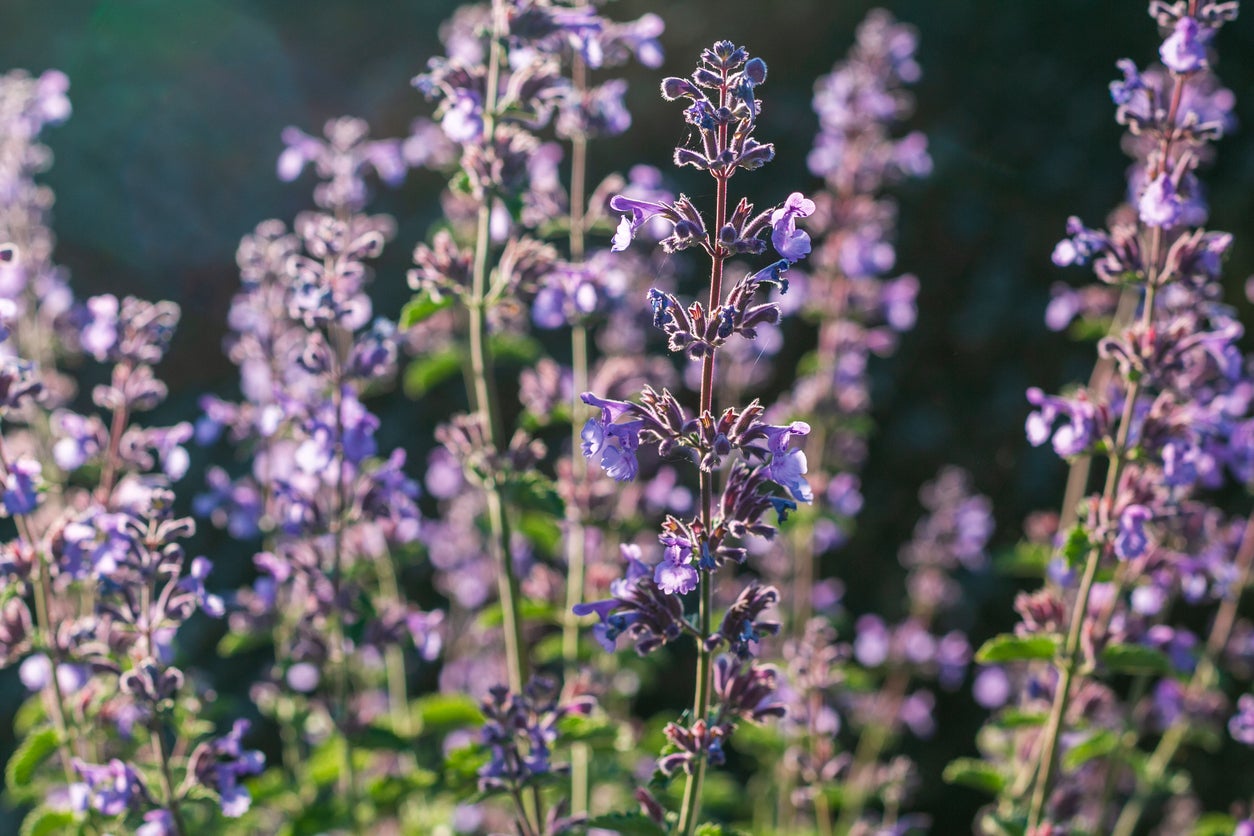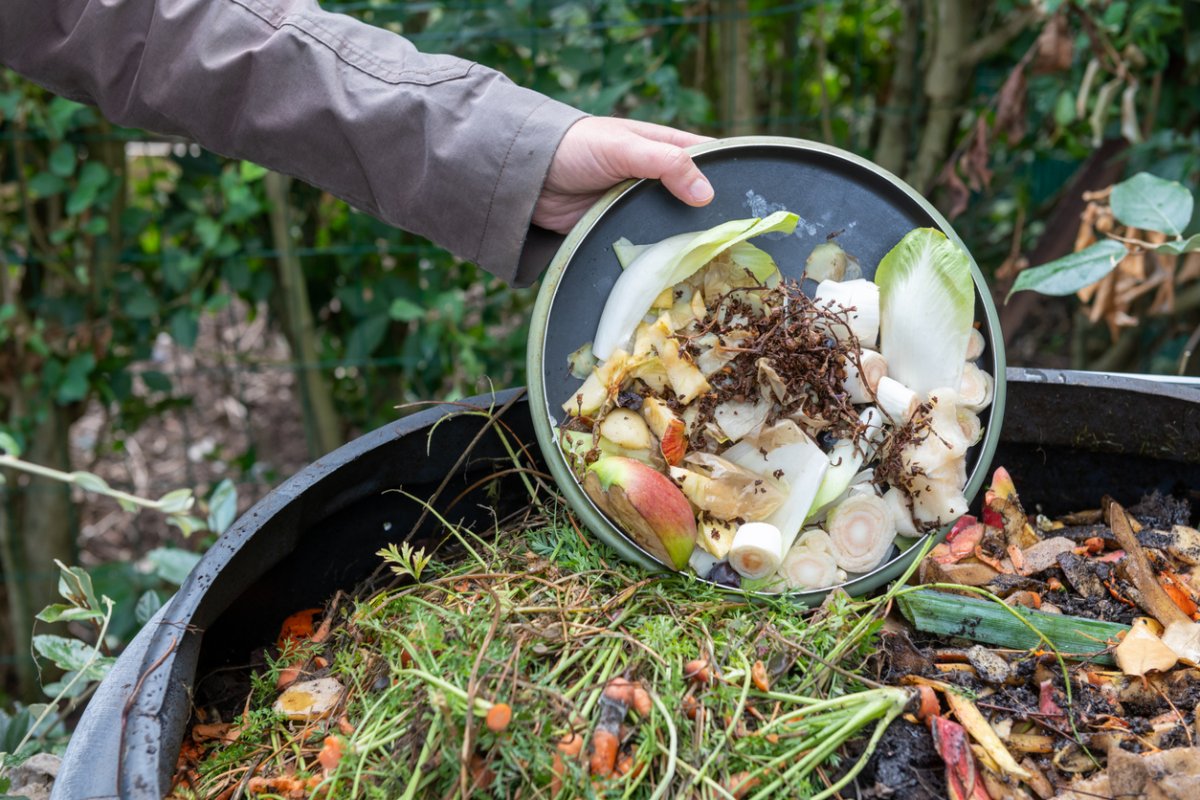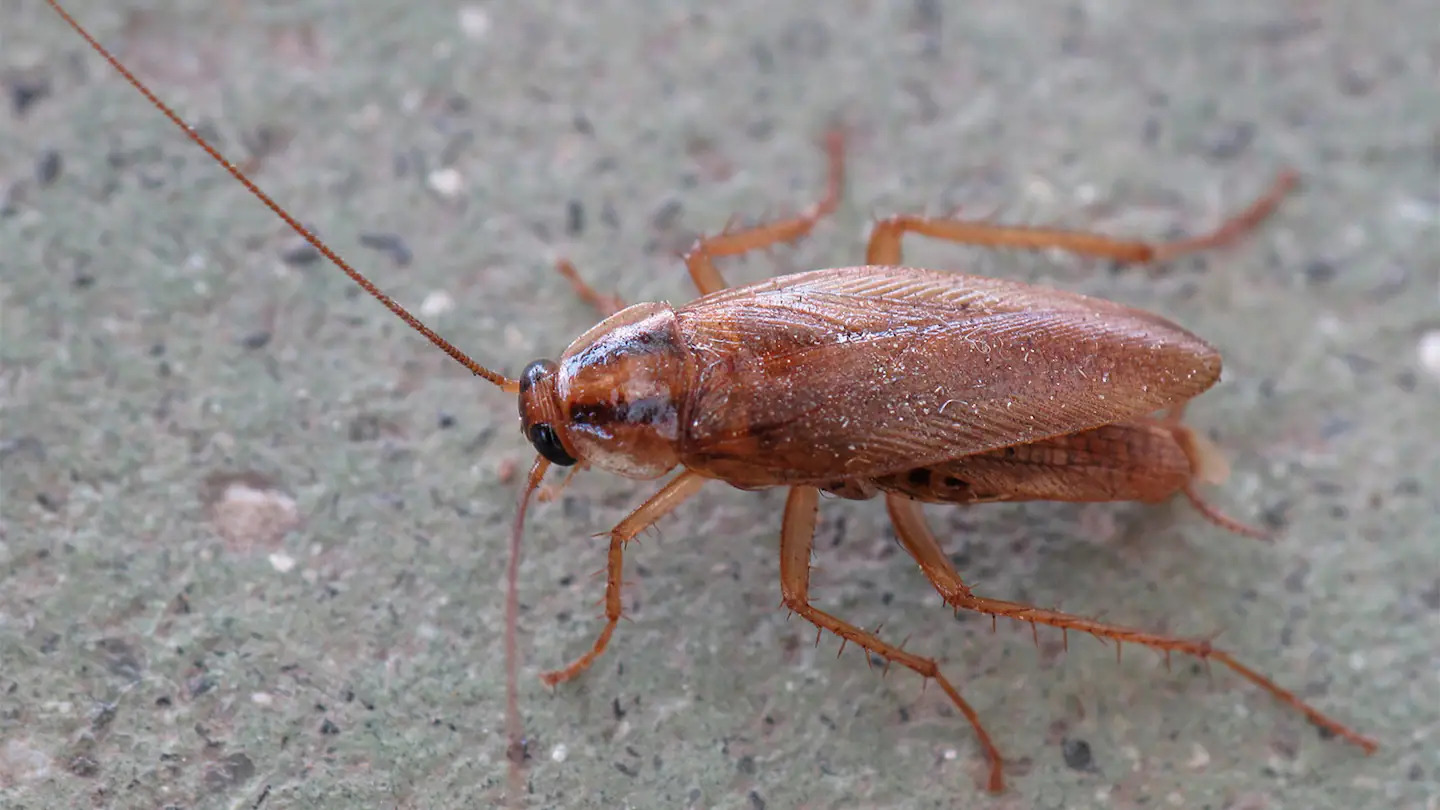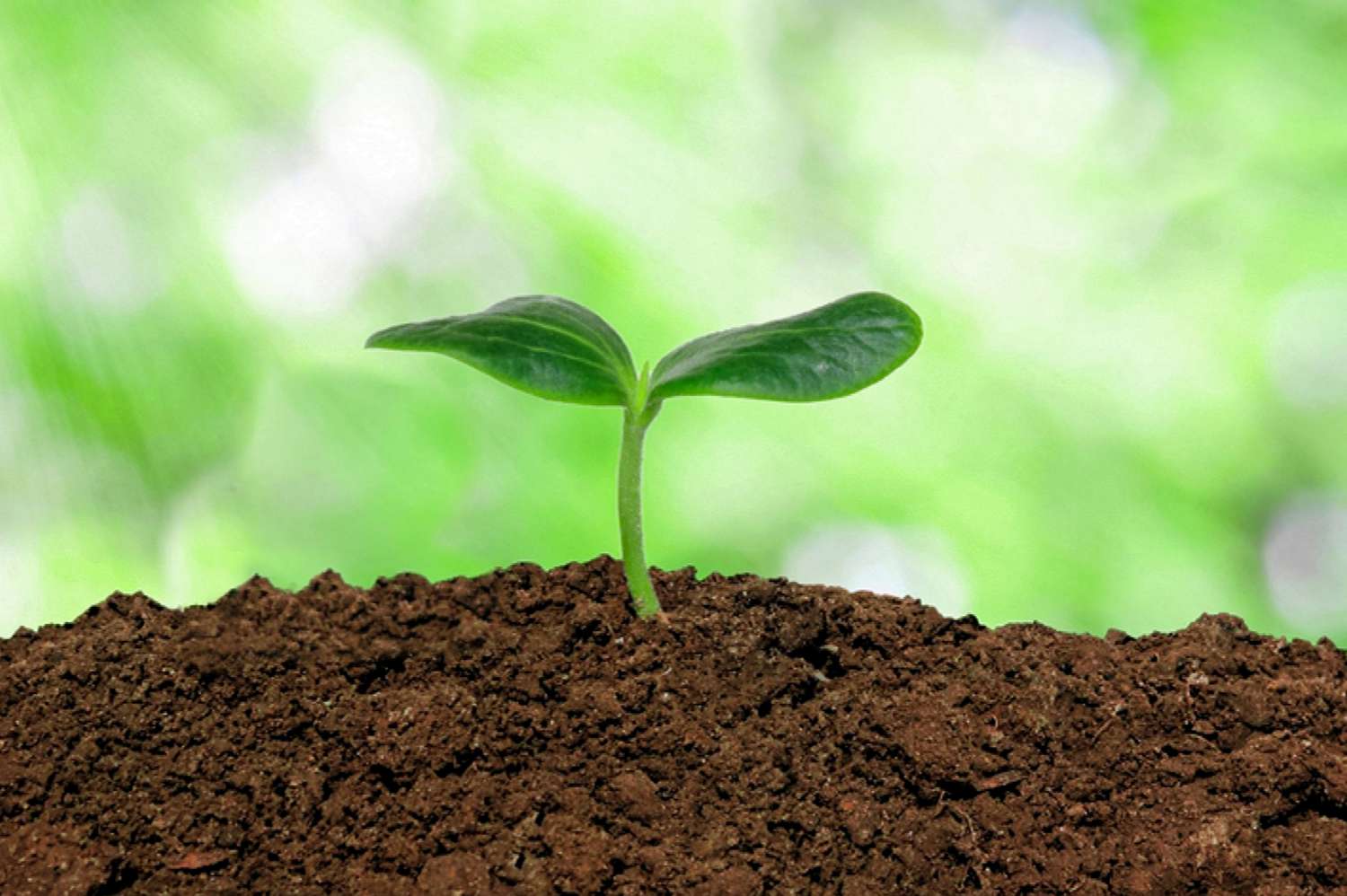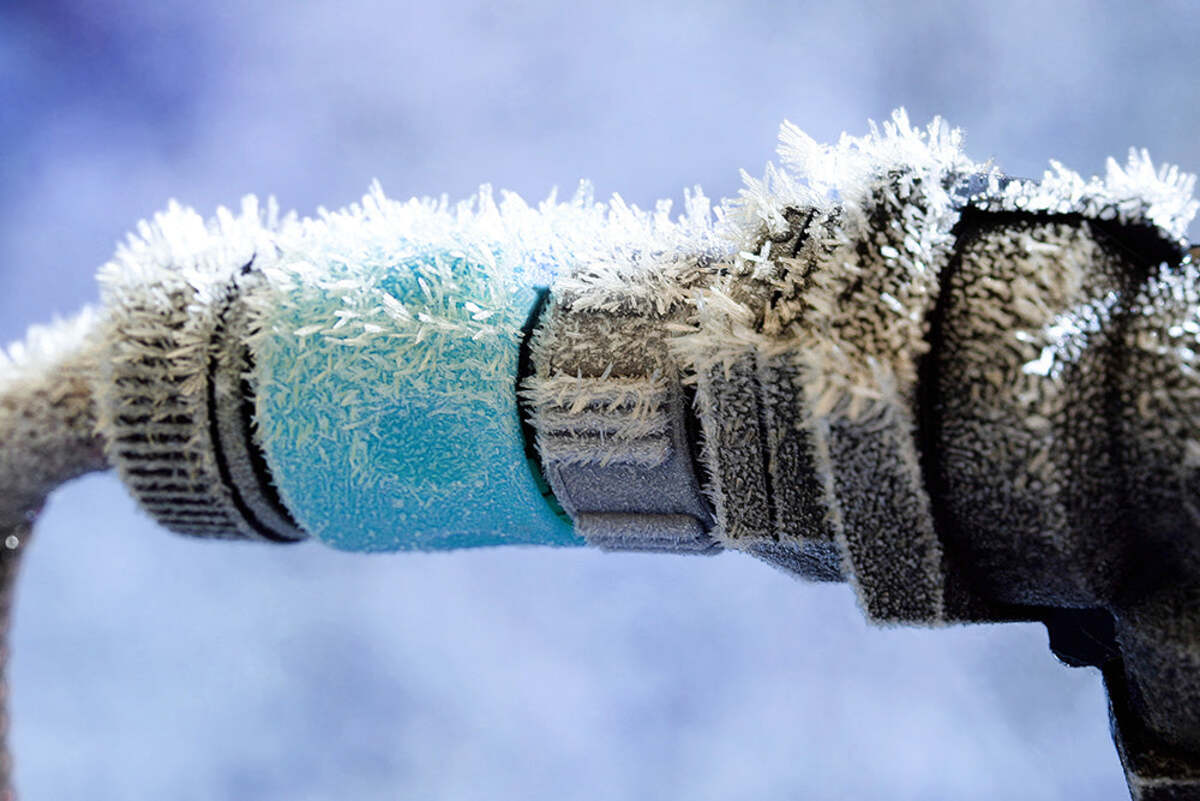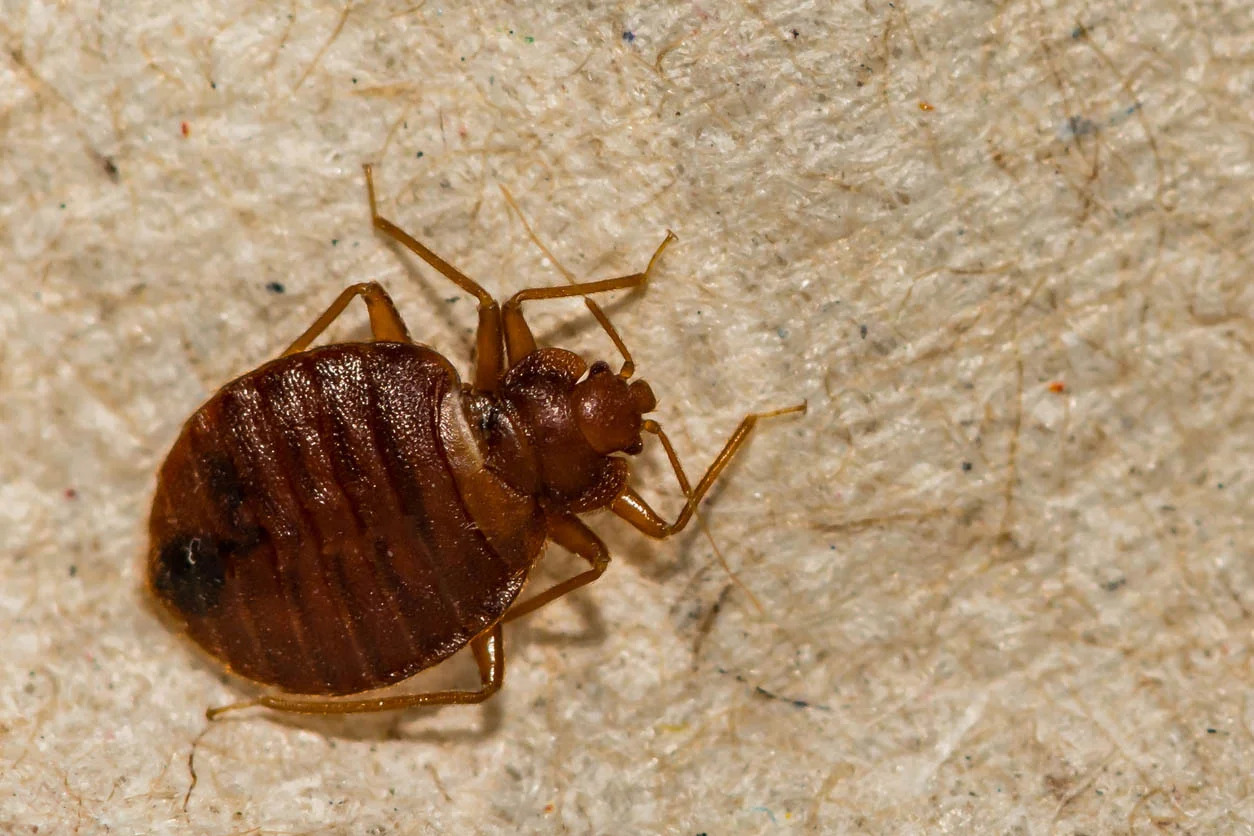Home>Gardening Basics>Understanding Soil>How To Keep Topsoil From Washing Away
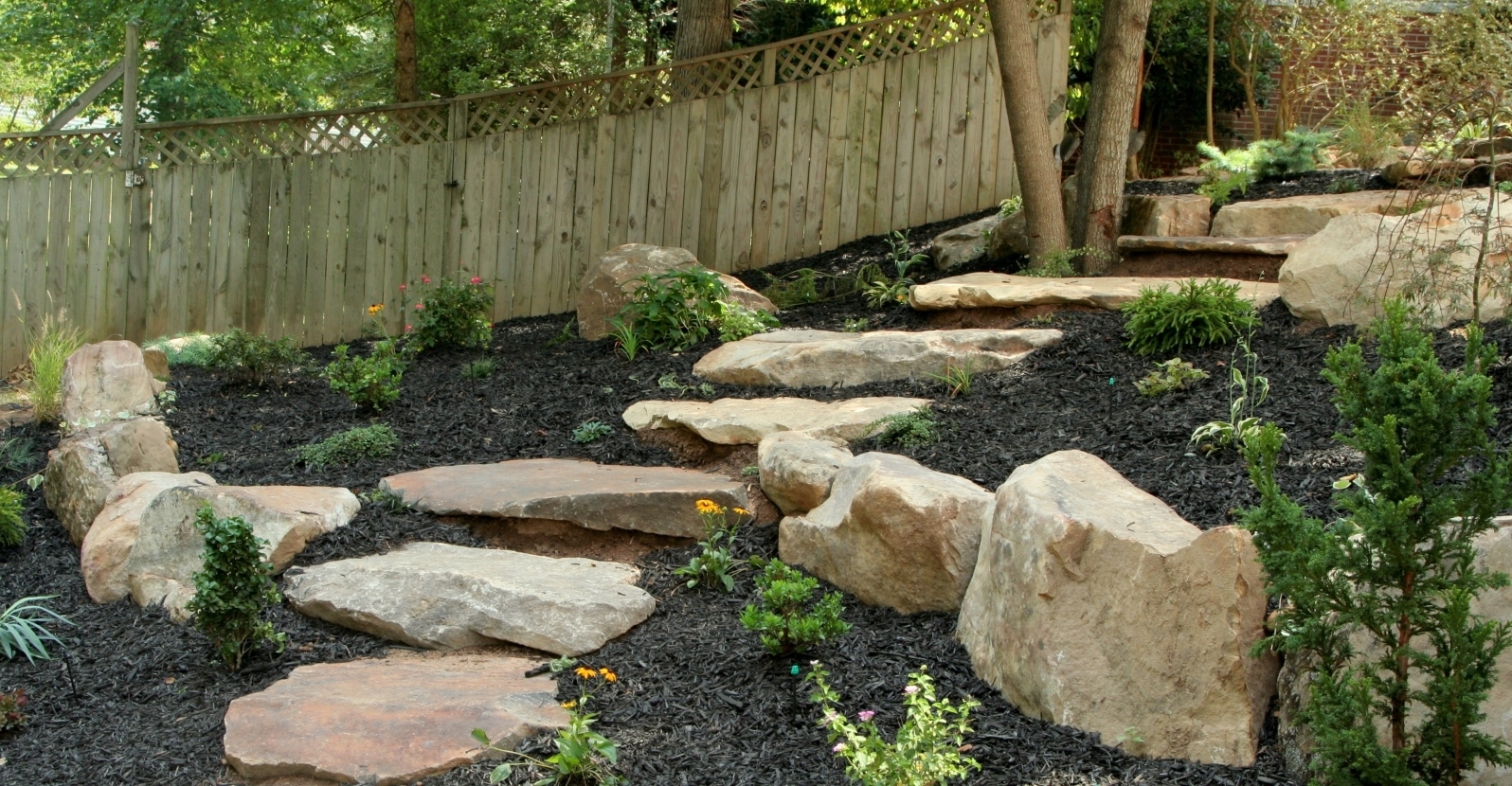

Understanding Soil
How To Keep Topsoil From Washing Away
Modified: February 8, 2024
Learn how to prevent topsoil erosion and keep your soil in place with our guide on understanding soil. Prevent soil runoff and preserve your garden.
(Many of the links in this article redirect to a specific reviewed product. Your purchase of these products through affiliate links helps to generate commission for Chicagolandgardening.com, at no extra cost. Learn more)
Table of Contents
Introduction
Soil is a valuable resource that plays a vital role in supporting life on Earth. Within the soil, topsoil holds a special significance. Topsoil, also known as the “A horizon,” is the uppermost layer of soil that is rich in organic matter, nutrients, and microorganisms. It is crucial for plant growth and provides a medium for plant roots to anchor and absorb water and essential nutrients.
Unfortunately, topsoil erosion has become a pressing environmental issue. Soil erosion occurs when topsoil is washed away or blown off by wind, leading to the loss of fertile soil and its valuable nutrients. This erosion can have negative consequences for agriculture, ecosystem integrity, and water quality.
Erosion can occur due to various factors, including heavy rainfall, poor agricultural practices, deforestation, and improper land management. However, there are several effective methods that can be implemented to prevent topsoil erosion and preserve this invaluable resource.
In this article, we will explore the importance of topsoil, the causes of soil erosion, and delve into various methods that can be employed to prevent topsoil from washing away. By implementing these methods, we can ensure the long-term sustainability of our soil and preserve its integrity for future generations.
Importance of Topsoil
Topsoil is the fertile uppermost layer of soil that supports plant growth and provides a range of crucial ecosystem services. It is rich in organic matter, nutrients, minerals, and beneficial microorganisms, making it essential for agricultural productivity and environmental sustainability.
One of the key roles of topsoil is its ability to act as a reservoir for water. The organic matter and structure of topsoil allow it to retain moisture, reducing water runoff and preventing soil erosion. This water-holding capacity is vital for sustaining plant growth, especially during periods of drought.
Furthermore, topsoil serves as a habitat for a plethora of microorganisms such as bacteria, fungi, and earthworms. These microorganisms contribute to the decomposition of organic matter, nutrient recycling, and the maintenance of soil structure. They also enhance the soil’s ability to absorb and release nutrients, facilitating their availability to plants.
In addition to its role in plant nutrition, topsoil also plays a significant role in carbon storage. It acts as a major carbon sink, sequestering atmospheric carbon dioxide through the process of photosynthesis. This helps mitigate climate change by reducing greenhouse gas emissions.
From an agricultural perspective, topsoil is the foundation for successful crop production. The presence of nutrient-rich topsoil promotes healthy root development, leading to higher crop yields. Farmers rely on the fertility of topsoil to provide essential nutrients to their crops, reducing the need for synthetic fertilizers.
Moreover, topsoil provides a suitable habitat for beneficial insects, birds, and other wildlife. It supports biodiversity and contributes to the overall health and balance of the ecosystem. Without a healthy topsoil ecosystem, the life-supporting functions of the soil would be compromised.
Given the immense importance of topsoil, it is crucial to take proactive measures to prevent its erosion. By preserving and protecting this delicate layer of soil, we can ensure the long-term sustainability of agriculture, maintain healthy ecosystems, and safeguard our future generations.
Causes of Soil Erosion
Soil erosion is a natural process, but human activities can accelerate it to alarming levels. Understanding the causes of soil erosion is crucial for implementing effective prevention strategies. Here are some of the primary causes of soil erosion:
- Water Erosion: Heavy rainfall can lead to water erosion, especially on bare or sloped surfaces. The force of the water runoff can dislodge and carry away the top layer of soil.
- Wind Erosion: In areas with dry and sandy soils, wind erosion is a significant concern. High winds can pick up loose soil particles and create dust storms, causing the loss of valuable topsoil.
- Poor Agricultural Practices: Unsustainable agricultural practices such as intensive tillage, overgrazing, and monocropping can contribute to soil erosion. These practices can disturb the soil structure, remove protective vegetation, and leave the soil exposed to erosive forces.
- Deforestation: Trees and other vegetation play a vital role in preventing soil erosion. Deforestation, especially on slopes, removes this protective cover, making the soil vulnerable to erosion by wind and water.
- Improper Land Management: Improper land management practices, such as improper construction, mining, and landfills, can disrupt the natural drainage patterns and exacerbate soil erosion.
- Climate Change: Increasingly unpredictable weather patterns and extreme weather events associated with climate change, including heavy rainfall and strong winds, can intensify soil erosion rates.
The combination of these factors can lead to severe soil erosion, resulting in the loss of fertile topsoil, depletion of soil nutrients, reduced agricultural productivity, and negative impacts on water quality.
It is important to recognize that soil erosion is not a problem that can be solved overnight. It requires a long-term commitment to sustainable land management practices and the implementation of erosion control measures.
In the following sections, we will explore various methods and techniques that can be employed to prevent topsoil erosion and protect this vital resource.
Methods to Prevent Topsoil Erosion
Preventing topsoil erosion is essential for maintaining soil health, preserving agricultural productivity, and safeguarding the environment. Implementing effective erosion control methods can significantly reduce the loss of valuable topsoil. Here are several techniques that can be employed to prevent topsoil erosion:
- Planting Vegetation: One of the most effective ways to prevent soil erosion is by establishing vegetation cover. Planting grass, shrubs, and trees helps to anchor the soil and reduce the impact of rainfall and wind. The roots of plants bind the soil particles together, providing stability and protection against erosion.
- Mulching: Applying mulch to the soil surface can significantly reduce erosion. Mulch acts as a protective layer, reducing the impact of raindrops and preventing soil compaction. It also helps retain moisture and regulate soil temperature, providing a favorable environment for plant growth.
- Terracing: Terracing involves creating level steps on sloping terrain to slow down water runoff. This technique helps to prevent soil erosion by reducing the speed and force of water flow, allowing it to infiltrate into the soil rather than carrying away the topsoil.
- Contour Plowing: Contour plowing is a farming technique where crops are planted along the contour lines of the land. By following the natural contours of the land, water runoff is slowed down, preventing soil erosion. This method helps to retain water and nutrients, improving soil health and crop yield.
- Installing Retaining Walls: In areas with steep slopes, installing retaining walls can be an effective solution to prevent soil erosion. Retaining walls provide structural support, holding back the soil and preventing it from washing away. They are particularly useful in preventing erosion along hillsides and embankments.
- Using Bioengineering Techniques: Bioengineering techniques involve using living plant material to stabilize soil and prevent erosion. This can include constructing vegetated slopes, using erosion control blankets, and planting erosion-resistant species. These methods combine the benefits of vegetation, natural materials, and engineering principles to prevent topsoil erosion.
- Soil Conservation Practices: Implementing soil conservation practices, such as crop rotation, cover cropping, and reduced tillage, can help to preserve topsoil. Crop rotation helps prevent nutrient depletion and soil erosion by alternating crops with different nutrient requirements. Cover cropping involves planting non-cash crops during fallow periods to protect the soil from erosion and build organic matter. Reduced tillage techniques minimize soil disturbance and help maintain soil structure and organic matter content.
By employing these methods to prevent topsoil erosion, we can ensure the long-term sustainability of our soil resources, promote agricultural productivity, and safeguard the environment.
Planting Vegetation
Planting vegetation is one of the most effective and widely used methods to prevent topsoil erosion. Vegetation, particularly grass, shrubs, and trees, plays a critical role in stabilizing the soil and reducing the impact of erosive forces such as wind and rainfall.
When plant roots penetrate the soil, they create a network of fibrous roots that bind the soil particles together, making it more resistant to erosion. This root system also helps to improve soil structure by enhancing its ability to absorb and retain water. Moreover, the above-ground foliage acts as a physical barrier, reducing the impact of raindrops and minimizing soil compaction.
Strategically planting vegetation in areas prone to erosion can provide several benefits. In sloped areas, grasses can be planted horizontally to intercept and slow down the flow of water. This allows more time for the water to infiltrate the soil, rather than running off and carrying away valuable topsoil.
For areas with steeper slopes, a combination of grasses, shrubs, and trees can be planted to provide additional stability. The deep roots of trees and shrubs anchor the soil, preventing slope failure and reducing the risk of landslides. These plants also provide a larger canopy cover, which helps to regulate soil temperature and minimize evaporation, retaining moisture in the soil.
In agricultural fields, the practice of planting cover crops can be employed to protect the soil during fallow periods. Cover crops, such as legumes or grasses, are grown to cover the soil surface between cash crop rotations. They protect the soil from erosive forces, improve soil structure, and add organic matter when they are eventually incorporated back into the soil.
Planting vegetation is a versatile method that can be adapted to various landscapes and soil conditions. Whether it is a small backyard garden or large-scale agricultural fields, the strategic planting of vegetation can significantly reduce topsoil erosion and provide long-term benefits for soil health and ecosystem sustainability.
Mulching
Mulching is a simple yet effective method to prevent topsoil erosion and improve soil health. It involves covering the soil surface with a layer of organic or inorganic materials, such as straw, leaves, wood chips, or plastic mulch.
The primary function of mulch is to act as a protective barrier between the soil and external erosive forces. It helps to reduce the impact of raindrops by breaking their fall and dispersing their energy. This minimizes soil compaction and prevents the formation of surface crusts, which can impede water infiltration and promote runoff.
Mulch also plays a vital role in retaining soil moisture. By covering the soil, it acts as a barrier that reduces evaporation, keeping the soil moist for longer periods. This is particularly beneficial during hot and dry weather conditions when the soil is more prone to erosion.
Furthermore, mulch helps to regulate soil temperature. In hot climates, it provides shade and insulation, preventing the soil from overheating. Conversely, in colder climates, it acts as a buffer that protects the soil from freezing temperatures, helping to maintain a stable soil environment that is conducive to plant growth.
In addition to erosion control and moisture conservation, mulch also contributes to soil fertility and organic matter content. As organic mulch decomposes over time, it adds nutrients to the soil, promoting improved plant growth and overall soil health. Organic mulches also enhance the activity of beneficial soil microorganisms, further enriching the soil ecosystem.
When using mulch, it is essential to select the appropriate type and thickness for the specific conditions. Organic mulches, such as straw or wood chips, are beneficial for improving soil structure and nutrient content. Inorganic mulches, such as plastic film or landscape fabric, provide effective weed control and moisture retention.
Overall, mulching is a cost-effective and environmentally friendly method to prevent topsoil erosion. By implementing mulch practices in gardens, landscaping, and agricultural fields, we can conserve soil moisture, improve soil fertility, and protect the valuable topsoil layer from erosion.
Terracing
Terracing is a method used to prevent topsoil erosion on steep slopes by establishing a series of level steps along the contour lines of the land. This technique effectively helps to reduce the speed and force of water runoff, allowing it to infiltrate into the soil rather than eroding the topsoil.
The construction of terraces involves reshaping the landscape and creating flat or gently sloping areas, usually with the use of retaining walls or embankments. These structures hold back the soil and prevent it from washing downhill during heavy rainfall events.
One of the primary benefits of terracing is that it slows down the flow of water, giving it more time to infiltrate into the soil. This allows the soil to absorb the water, reducing runoff and erosion. By reducing the erosive impact of water, terracing helps to preserve the integrity of the topsoil layer and maintain its fertility.
In addition to erosion control, terraces provide various other advantages. They create more uniform growing conditions for crops, allowing for better water distribution and nutrient availability. The level terraces also reduce the risk of soil erosion from wind, as the wind is less likely to dislodge soil particles from the flat surfaces.
Terraces can be implemented in both agricultural and residential settings. In agriculture, terracing is commonly used in hilly or mountainous regions to maximize arable land and cultivate crops on slopes that would otherwise be unsuitable. In landscaping, terracing can be utilized to prevent soil erosion in gardens and create visually appealing stepped designs.
It is important to keep in mind that the design and construction of terraces should be based on the specific characteristics of the site, such as soil type, slope gradient, and rainfall patterns. Proper drainage systems, such as contour ditches or tile drains, should be incorporated to ensure the efficient management of water within the terraced areas.
Overall, terracing is an effective technique for preventing topsoil erosion and maximizing land productivity on sloping terrains. By implementing terracing practices, we can preserve the valuable topsoil layer, promote sustainable agriculture, and maintain a healthy soil environment.
Contour Plowing
Contour plowing is an agricultural technique that involves tilling and planting crops along the contour lines of the land. Unlike traditional plowing that goes straight up and down slopes, contour plowing follows the natural contours of the land, creating rows that are level or slightly angled.
The main purpose of contour plowing is to prevent topsoil erosion by reducing the flow of water down slopes. By plowing and planting perpendicular to the slope, contour plowing slows down the speed of water runoff, allowing it to infiltrate into the soil rather than eroding the topsoil.
Contour plowing helps to create small barriers or ridges across the slope that trap water and prevent it from getting a fast, direct path downhill. This gives the water more time to percolate into the soil and replenish groundwater sources, while minimizing the erosive effects of runoff.
By minimizing the eroding effects of water, contour plowing helps to maintain the integrity of the topsoil layer. This preserves the soil’s fertility and nutrient content, which is essential for sustaining healthy plant growth and maximizing agricultural productivity.
In addition to erosion control, contour plowing offers other benefits. It helps to conserve moisture by reducing evaporation and improving water infiltration. This is especially important in regions with limited rainfall, where the efficient use of water resources is crucial for crop production.
Furthermore, contour plowing can enhance soil structure and prevent compaction. By following the natural contours of the land, farmers avoid creating furrows or ridges that can disrupt water flow and lead to soil compaction. This promotes better root development and nutrient uptake by crops, contributing to improved overall plant health.
Contour plowing is suitable for a wide range of crops and can be implemented on both small and large-scale agricultural fields. It is particularly beneficial on hilly or sloping terrain, where the risk of topsoil erosion is higher.
When practicing contour plowing, it is important to maintain the integrity of the contour lines, ensuring that subsequent tillage operations and planting follow the established pattern. Farmers should also incorporate other soil conservation practices, such as cover cropping and crop rotation, to further enhance erosion control and soil health.
By implementing contour plowing techniques, farmers can effectively reduce topsoil erosion, preserve soil fertility, and contribute to sustainable agricultural practices.
Installing Retaining Walls
Installing retaining walls is an effective method to prevent topsoil erosion, particularly in areas with steep slopes or hillsides. Retaining walls are structures made of materials such as concrete, timber, or stone that are designed to hold back and stabilize the soil, preventing it from washing away during heavy rainfall or other erosive forces.
One of the key benefits of retaining walls is their ability to redistribute the pressure caused by sloping terrain. By creating a vertical or near-vertical barrier, retaining walls help to absorb and redirect the force of gravity acting on the soil. This reduces the risk of landslides and slope failures, protecting the valuable topsoil from erosion.
Retaining walls can be particularly effective in areas where the slope gradient exceeds what is naturally stable. By installing retaining walls, the slope can be divided into multiple smaller sections, reducing the overall steepness and providing more stability.
Aside from erosion control, retaining walls offer other advantages. They create flat or terraced areas behind the wall, allowing for easier access, improved land use, and more efficient irrigation. These areas can be utilized for gardening, landscaping, or other purposes, providing additional benefits beyond erosion prevention.
When designing and constructing retaining walls, it is important to consider factors such as soil type, slope gradient, and hydraulic pressure. Proper drainage should also be incorporated into the design to ensure that water does not accumulate behind the wall, causing additional pressure and potential damage.
Retaining walls can be customized to fit the aesthetic preferences of the landscape, making them not only functional but also visually appealing. With a variety of materials and designs, retaining walls can enhance the overall beauty of the area and add value to the property.
It is worth noting that installing retaining walls may require professional expertise, especially for more complex projects or in areas where soil conditions are challenging. Consulting with a qualified engineer or contractor is recommended to ensure the proper design, construction, and long-term stability of the retaining wall.
By installing retaining walls, property owners can effectively prevent topsoil erosion, protect valuable land from slope instability, and create functional and visually appealing spaces for various purposes.
Using Bioengineering Techniques
Bioengineering techniques involve the use of living plant material and natural materials to stabilize soil and prevent topsoil erosion. This approach combines the benefits of vegetation, natural materials, and engineering principles to create effective and environmentally friendly erosion control solutions.
One common bioengineering technique is the construction of vegetated slopes or hillsides. This involves planting a variety of erosion-resistant species on sloping surfaces to stabilize the soil. These plants have deep roots that penetrate the soil, helping to bind it together and provide stability. Additionally, they act as living barriers, intercepting rainfall and reducing the impact of erosive forces.
Another bioengineering technique is the use of erosion control blankets or mats. These are biodegradable materials made of natural fibers or straw that are placed on bare soil surfaces to prevent erosion. The blankets provide immediate protection by absorbing the energy of raindrops, reducing soil compaction, and allowing water infiltration. Over time, the blankets biodegrade and provide organic matter to the soil, further enhancing its fertility.
In areas with high erosion risks, bioengineering techniques such as geotextiles can be used. Geotextiles are permeable fabrics made from synthetic materials that are placed on slopes or embankments to stabilize the soil. They act as a mechanical barrier, preventing soil erosion, while still allowing water to pass through and reach the ground.
Live fascines and brush layers are other bioengineering techniques that involve using living branches and brushwood to stabilize slopes and prevent erosion. These materials are arranged and secured along eroding areas, allowing them to revegetate naturally and provide immediate protection against erosion.
Bioengineering techniques are particularly beneficial in environmentally sensitive areas where the use of chemical or engineered solutions may not be suitable. They promote ecological balance by utilizing native plant species and natural materials. These techniques also create habitat for wildlife, contribute to biodiversity, and improve overall landscape aesthetics.
Implementing bioengineering techniques requires careful planning and consideration of site-specific conditions. Factors such as soil analysis, hydrological characteristics, and the selection of appropriate plant species are crucial for successful implementation. Seeking guidance from professionals with expertise in bioengineering is recommended to ensure the effectiveness of the techniques.
By utilizing bioengineering techniques, we can effectively prevent topsoil erosion, promote ecological sustainability, and maintain the integrity of our soil resources for future generations.
Soil Conservation Practices
Soil conservation practices encompass a range of techniques and strategies aimed at maintaining the health and quality of soil, thereby preventing topsoil erosion. These practices focus on preserving the integrity of the soil structure, enhancing its ability to absorb and retain water, and minimizing the risk of erosion. Here are some key soil conservation practices:
- Crop Rotation: Crop rotation involves systematically changing the type of crops grown in a specific field each season. This practice helps break pest and disease cycles, improve soil fertility, and reduce the risk of nutrient depletion. By alternating crops with different nutrient needs, the soil remains balanced, reducing the likelihood of erosion and improving overall soil health.
- Cover Cropping: Cover cropping involves planting non-cash crops, such as legumes or grasses, during fallow periods or between cash crop rotations. These cover crops protect the soil surface from erosive forces, improve soil structure, and contribute organic matter when they are eventually incorporated into the soil. Cover crops also help suppress weeds, reduce evaporation, and enhance water infiltration.
- Reduced Tillage: Reduced tillage practices minimize soil disturbance, leaving crop residues on the surface instead of tilling them into the soil. By reducing the intensity and frequency of tillage, the soil structure is preserved, organic matter is retained, and erosion risk is decreased. Reduced tillage practices also help conserve soil moisture, increase microbial activity, and promote beneficial soil organisms.
- Contour Farming: Similar to contour plowing, contour farming involves planting crops along the contour lines of the land. This practice helps to slow down water runoff, minimize erosion, and promote water infiltration. By following the natural contours, water is directed along the curve of the land, reducing the erosive forces and supporting soil conservation efforts.
- Terracing: Terracing, as discussed earlier, involves creating level steps on sloping terrain to slow down water runoff. Terraces prevent erosion by reducing the speed and force of water, allowing it to infiltrate into the soil rather than carrying away the topsoil. This practice is particularly effective on steep slopes where erosion risks are high.
- Windbreaks: Windbreaks are rows of trees or shrubs planted perpendicular to prevailing winds. They act as barriers, reducing wind speed and preventing soil erosion caused by wind. Windbreaks also provide shade, conserve soil moisture, and create a microclimate that is more conducive to plant growth.
- Water Management: Proper water management practices, such as using irrigation techniques that minimize surface runoff and prevent over-irrigation, play a crucial role in soil conservation. Efficient irrigation methods, such as drip irrigation or precision sprinklers, reduce water waste and the risk of soil erosion due to excessive moisture.
Implementing these soil conservation practices requires a combination of planning, proactive management, and sustainable farming practices. Farmers, landowners, and agricultural professionals can work together to implement these techniques and ensure the long-term health and productivity of the soil.
By using these soil conservation practices, we can effectively minimize topsoil erosion, improve soil fertility, and maintain the sustainability of our agricultural systems while preserving the health of our environment.
Conclusion
Topsoil erosion poses a significant threat to soil health, agricultural productivity, and environmental sustainability. However, by implementing effective erosion control methods, we can prevent the loss of valuable topsoil and ensure the long-term integrity of our soils.
The importance of topsoil cannot be overstated. It serves as a vital resource for plant growth, nutrient cycling, water filtration, and carbon sequestration. It supports diverse ecosystems and provides a foundation for agricultural success. Protecting this resource is essential for our food security, environmental well-being, and the overall health of our planet.
Throughout this article, we have explored various methods to prevent topsoil erosion. Planting vegetation, mulching, contour plowing, installing retaining walls, using bioengineering techniques, and implementing soil conservation practices are all valuable strategies for preserving topsoil and preventing erosion.
Each method has its unique advantages and applicability, and the most effective approach may vary depending on the specific site conditions and land use practices. It is crucial to consider factors such as soil type, slope gradient, climate, and the overall goals of soil conservation when selecting the appropriate techniques.
By integrating these erosion control methods into our agricultural and land management practices, we can mitigate the effects of erosion, reduce the loss of topsoil, and protect our soil resources for future generations.
However, it is important to remember that soil conservation is an ongoing effort that requires continuous monitoring, adaptation, and engagement from farmers, landowners, policymakers, and the wider community. Awareness, education, and support are crucial in promoting sustainable land management practices and shaping a future where topsoil erosion is minimized.
Together, we can make a significant impact in preserving our topsoil, safeguarding our agricultural systems, and maintaining a healthy environment for all living beings.
